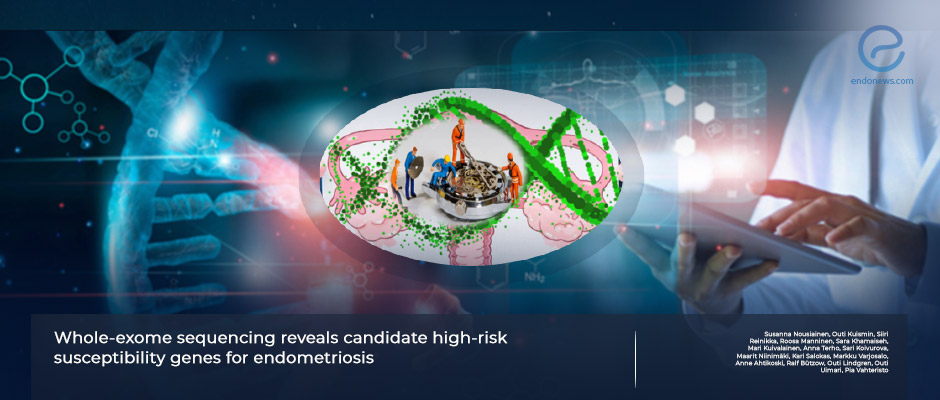Novel high-risk candidate genes for familial endometriosis
Dec 26, 2023
Investigation of genetic background underlying endometriosis is essential to develop non-invasive diagnostic methods and effective personalized treatments.
Key Points
Highlights:
- Endometriosis ihas a genetic background, and determination of high-risk candidate genes for familial endometriosis is necessary.
Importance:
- It is important to clarify the genetic background of endometriosis for expedited diagnostics, personalized treatments and risks for ovarian cancer.
What’s done here?
- This study was conducted to determine high-risk candidate genes for familial endometriosis and to assess the association of endometriosis with high-grade serous carcinoma.
- Four women having surgically confirmed and severely symptomatic endometriosis in the same Finnish family (2 were also diagnosed with high-grade serous carcinoma) were analyzed by whole exome sequencing.
- DNA samples from 54 endometriosis patients and tissue samples from 19 patients with both endometriosis and a premalignant or malignant phenotype were obtained from biobank and analyzed to validate results.
- Sanger sequencing for validation of candidate germline variants observed in whole genome sequencing, and p53 immunohistochemistry for high-grade serous carcinoma tissue samples were carried out.
Key results:
- Three rare candidate predisposing variants segregating with endometriosis were determined by whole-exome sequencing in 4 patients from the same family.
- These variants were: c.1238C>T, p.(Pro413Leu) in FGFR4; c.5065C>T, p.(Arg1689Trp) in NALCN; and c.2086G>A, p.(Val696Met) in NAV2.
- Alteration in FGFR4 was detected to be the only variant predicted deleterious by in silico tools.
- High-grade serous ovarian cancer in both patients was also confirmed.
Lay Summary
Endometriosis is a chronic inflammatory disease with a genetic background resulting in familial clustering. Although multiple susceptibility loci have been identified in genome-wide association studies, high-risk predisposing variants have not been defined yet.
A group of scientists from Finland, published a study en titled “Whole‑exome sequencing reveals candidate high‑risk susceptibility genes for endometriosis” in the journal Human Genomics. The authors aimed to determine high-risk candidate genes for familial endometriosis and to assess the association of endometriosis with high-grade serous carcinoma. A Finnish family including four women with surgically confirmed endometriosis two of which had also been diagnosed with high-grade serous carcinoma were analyzed.
All 4 patients underwent multiple surgeries because of endometriosis-associated resistant and progressive symptoms despite hormonal treatment. Three rare candidate predisposing variants segregating with endometriosis were determined by whole-exome sequencing. Alteration in FGFR4 was detected to be the only variant predicted deleterious by in silico tools. Other variants were in NALCN, and NAV2 genes. Further screening of the variants in 92 Finnish endometriosis and in 19 endometriosis-ovarian cancer patients did not reveal additional carriers.
The authors provide FGFR4, NALCN, and NAV2 as novel high-risk candidate genes for familial endometriosis and supportive results on the association of endometriosis with high-grade serous carcinoma. However, they also mentioned that further studies are required to validate the findings and to reveal the exact pathogenesis mechanisms of endometriosis. "Elucidating the genetic background of endometriosis defines the etiology of the disease and provides opportunities for expedited diagnostics and personalized treatments", they added.
Research Source: https://pubmed.ncbi.nlm.nih.gov/37789421/
endometriosis familial predisposition whole-exome sequencing high-grade serous carcinoma candidate genes FGFR4 NALCN NAV2

